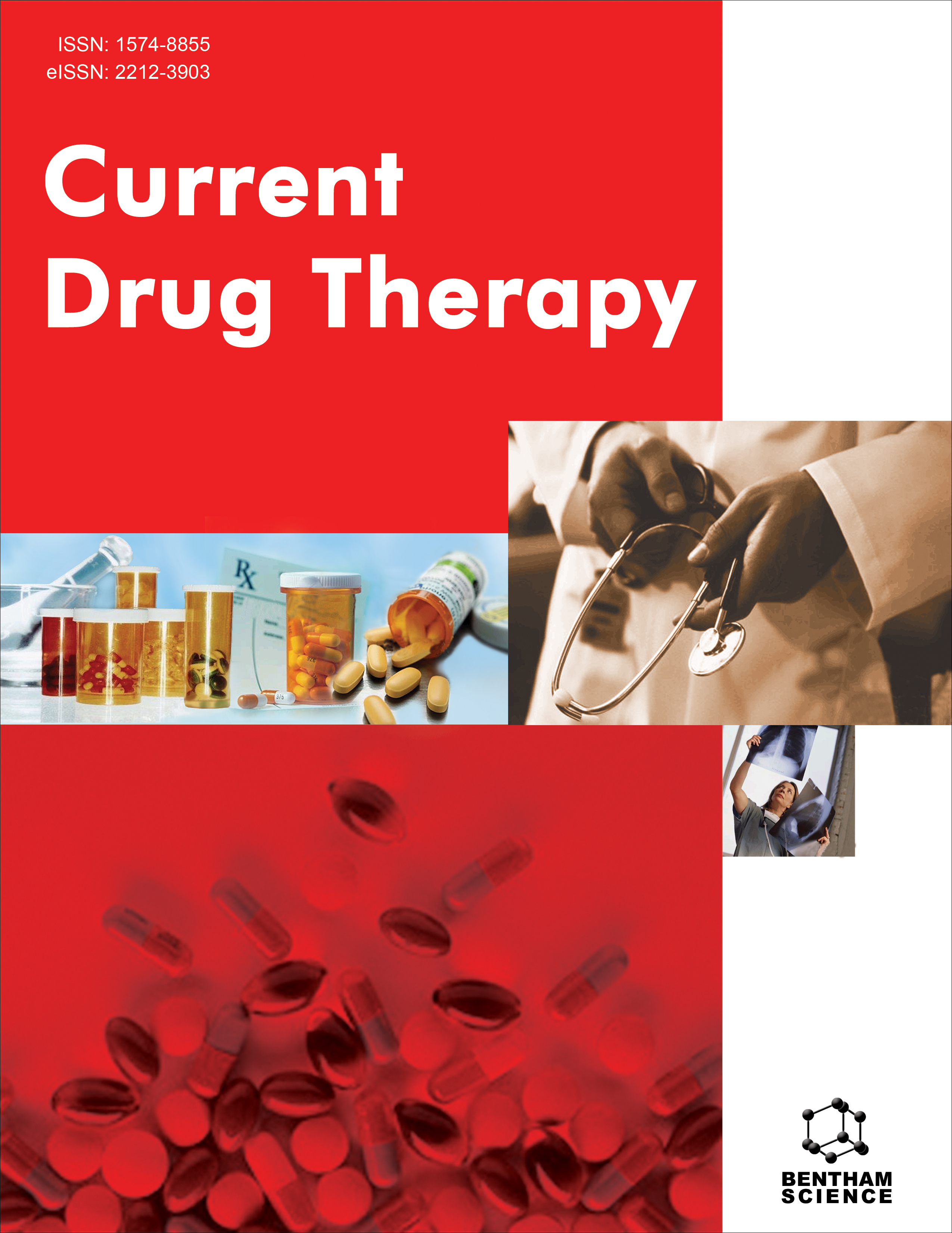- Home
- A-Z Publications
- Current Drug Therapy
- Previous Issues
- Volume 12, Issue 1, 2017
Current Drug Therapy - Volume 12, Issue 1, 2017
Volume 12, Issue 1, 2017
-
-
Steroid Hybrid Systems: New Molecular Entities with Potential Therapeutical Spectrum
More LessAuthors: Preetismita Borah and Pritish ChowdhuryBackground: Hybrid systems in recent times are drawing considerable attention in the area of drug development as many of such systems are now becoming drug targets in diverse therapeutical applications. In our recent work, we reported a Microwave (MW) irradiated Ugi-4 component reaction (Ugi-4CR) in synthesizing a number of steroid-amino acid conjugates based on seco-steroid hydroxyacids (A, B & D ring cleavag Read More
-
-
-
Gelatin Tannate: A Selective Biofilm-Forming, Gut Mucoprotectant for Acute Gastroenteritis in Children. A Short Narrative Review
More LessAuthors: Jess Torres-Herrera and Gabriel Torres-RuizBackground: Gelatin tannate is bowel selective, safe and effective, and acts locally to form a biofilm. As an adjuvant to oral rehydration solution (ORS), gelatin tannate acts as a mucoprotectant in the management of acute diarrhea in children. Objective: To provide an up-to-date review of the pharmacological profile of gelatin tannate, and its efficacy and safety in the treatment of children with acute gastroenteritis. Methods: A Read More
-
-
-
Prodrugs to Codrugs
More LessAuthors: Deepali Gangrade and Ravindra KarandeBackground: The Carrier linked prodrug as per literature is known to be a pharmacologically inactive chemical derivative and could be used to change the physicochemical properties of compounds. Codrugs is a type of carrier linked prodrug, and consist of two usually synergistic drugs or moieties attached to each other. Objective: synthesis of codrug consists of two pharmacologically active compounds coupled together w Read More
-
-
-
Anticancer Drug Development, System Updating and Global Participations
More LessAuthors: Da-Yong Lu, Ting-Ren Lu, En-Hong Chen, Nagendra Sastry Yarla, Bin Xu, Jian Ding and Hong ZhuBackground: New anticancer drug discovery, development and manufacture entered the bottleneck stage. Many limitations of both technology and animal models slow down the anticancer drug developments Objective: To ease economic burdens for drug developers and general patient populations. Methods: Key factors affecting anticancer drug developments and possible roadmaps for updating drug screening routines Read More
-
-
-
In-Silico Analysis of Imidazo[2,1-b][1,3,4]thiadiazole Analogs as Putative Mycobacterium tuberculosis Enoyl Reductase Inhibitors
More LessAuthors: Preeti Wadhwa, Sourav Bagchi and Anuj SharmaBackground: Trans-2-Enoyl-ACP reductase (InhA) is an established target towards anti-tuberculosis therapy. Objective: Computational studies on imidazo[2,1-b][1,3,4]thiadiazole derivatives as putative InhA inhibitors. Methods: Combined molecular docking and three-dimensional quantitative structureactivity relationship (3D-QSAR) comprising comparative molecular field analysis (CoMFA) and comparative molecular similarity i Read More
-
-
-
Hypothalamic Insulin-Sensitizing Effect of Exenatide in Dietary Induced Rat Model of Obesity
More LessAuthors: Hanan Eissa, Vivian Boshra, Huessin M. El-Beltagi, Doaa M. Ghanam and Mohamed-Ahdy A. SaadBackground: Brain insulin receptor is considered an important regulatory factor for appetite regulation, white fat mass metabolism, and hepatic glucose output. Disruption of neuronal insulin action leads to obesity, metabolic syndrome and neurodegenerative disorders. Objective: The aim of the present study was to find out the effect of exenatide, a GLP-1 analog, on the hypothalamic insulin receptor (IR) gene expression in hi Read More
-
-
-
Cyanosis Due to Methemoglobinemia Induced by Topical Anesthesia in a Premature Infant
More LessBackground: Methemoglobinemia is a rare cause of cyanosis in pediatric patients and may arise as a result of a genetic defect in red blood cell metabolism or hemoglobin structure, or it may be acquired following exposure to various oxidant drugs or toxins. It is characterized by increased quantities of hemoglobin in which the iron of heme is oxidized to the ferric (Fe3+) form. Case Report: We describe a case of a prematur Read More
-
Volumes & issues
-
Volume 20 (2025)
-
Volume 19 (2024)
-
Volume 18 (2023)
-
Volume 17 (2022)
-
Volume 16 (2021)
-
Volume 15 (2020)
-
Volume 14 (2019)
-
Volume 13 (2018)
-
Volume 12 (2017)
-
Volume 11 (2016)
-
Volume 10 (2015)
-
Volume 9 (2014)
-
Volume 8 (2013)
-
Volume 7 (2012)
-
Volume 6 (2011)
-
Volume 5 (2010)
-
Volume 4 (2009)
-
Volume 3 (2008)
-
Volume 2 (2007)
-
Volume 1 (2006)
Most Read This Month
Article
content/journals/cdth
Journal
10
5
false
en


